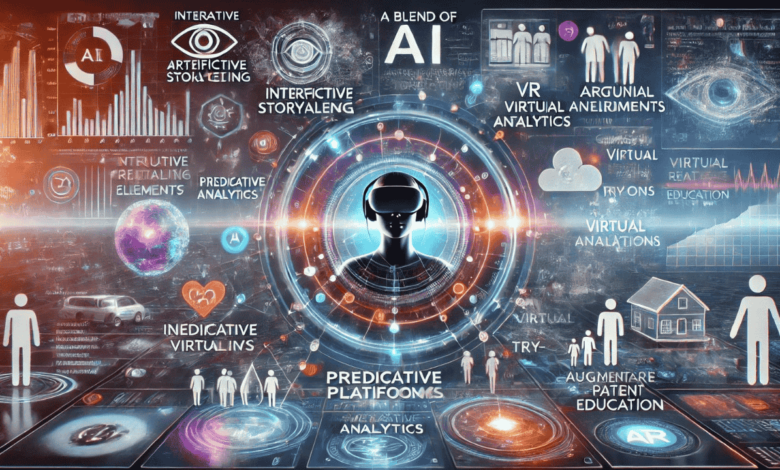Introduction
In the ever-evolving landscape of technology and culture, new terms and concepts emerge almost daily. One such term that has begun to pique curiosity across several domains is “Methatreams.” While it may sound like a term out of a science fiction novel or a new digital buzzword, Methatreams represent something much more grounded in our rapidly advancing technological and cultural world. In this article, we will explore the meaning, origin, implications, and future of Methatreams, all while breaking down how this concept fits into various spheres such as technology, entertainment, and social interaction.
What Exactly Are Methatreams?
Before diving into the complexities, let’s first define what Methatreams are. In simple terms, Methatreams can be described as interconnected, multi-layered virtual spaces or experiences that blend various forms of media, communication, and interaction. Think of it as the next evolution of streaming but with a broader, more immersive twist.

At their core, Methatreams combines elements of augmented reality (AR), virtual reality (VR), live streaming, and AI-driven customization. The experience goes beyond passive consumption, creating a participatory environment where the audience can not only consume content but also interact with it in real time. In essence, Methatreams are a mix of entertainment, technology, and social interaction, all rolled into one dynamic package.
The Evolution of Streaming: From Traditional Media to Methatreams
To fully appreciate what Methatreams represent, it’s important to look at the evolution of streaming and how we consume media. Traditional media, such as television and radio, offered a one-way communication channel. In the early days of the internet, streaming services like YouTube, Netflix, and Spotify revolutionized the way we accessed content, allowing for on-demand viewing of videos, music, and films.
However, even with these advancements, streaming was still somewhat passive. The audience had control over what to watch or listen to, but there was limited engagement beyond that. With the introduction of live streaming platforms like Twitch and interactive media formats, things started to shift. Now, Methatreams take it a step further by introducing real-time interaction, not just between the content creators and their audience, but also among the viewers themselves.
The Core Components of Methatreams
Methatreams are built upon several key technologies that make them unique. Below are some of the most important components that define Methatreams:
Augmented and Virtual Reality: The backbone of Methatream is immersive technology. AR and VR allow users to engage with content in new ways, such as exploring 3D environments or interacting with virtual objects.
Artificial Intelligence: AI plays a central role in personalizing the experience. Whether it’s through dynamic content recommendations or adaptive environments, AI helps shape the Methatream experience based on individual preferences.
Interactive Streaming: Unlike traditional streaming, Methatream allows for real-time interaction. Viewers can make decisions that impact the story or environment, chat with others in real-time, or even participate in the content itself.
Blockchain and Digital Ownership: Another fascinating aspect of Methatreams is their potential connection with blockchain technology. With the rise of NFTs (non-fungible tokens) and digital assets, Methatream could open the door to new forms of ownership and monetization within the virtual space.
The Key Benefits and Impact of Methatreams
As the world becomes more digitally connected, it’s clear that Methatreams could have a profound impact on a variety of industries. Whether in entertainment, education, or business, the possibilities are vast.
Revolutionizing Entertainment and Media
One of the most immediate applications of Methatreams is in the entertainment industry. By blending virtual environments with real-time streaming, Methatream offers an entirely new way for audiences to experience films, TV shows, music performances, and more. Imagine watching a live concert, but instead of just viewing it on a screen, you’re able to virtually step into the concert hall, interact with other fans, and even influence the performance in real-time.
Additionally, Methatreams could dramatically change how video games are played. Unlike current video games, where you’re often confined to a set of rules and mechanics, Methatreams could enable users to step into a truly dynamic, evolving virtual world, shaped by both the actions of individual players and the broader community.
Creating New Social Spaces
Social interaction is another area where Methatreams could make a significant impact. Platforms like Facebook, Instagram, and Twitter have already changed the way people communicate online, but Methatream could take this even further. Virtual spaces would allow for new forms of communication, where people can gather in immersive environments rather than simply posting text or images.
For instance, friends could meet in a virtual park to watch a live sports event together, or users could attend a virtual art gallery, interacting with the exhibits in ways that go far beyond a flat image on a screen. In this way, Methatreams would introduce entirely new ways for people to connect, regardless of geographic location.
Transforming Education and Training
Methatreams could also have significant applications in education and professional training. Traditional e-learning platforms offer videos, quizzes, and discussion boards, but these methods can be limiting. Methatream, on the other hand, could create immersive, interactive learning environments that make education more engaging and effective.
For instance, imagine learning about history by virtually visiting ancient civilizations or learning how to perform surgery in a simulated, 3D environment. Such experiences would not only deepen the learning process but could also make it more accessible to people in remote areas, breaking down the barriers to quality education.
Enhancing Personalization and User Experience
One of the most appealing aspects of Methatreams is their ability to personalize the user experience. Thanks to AI algorithms, content within a Methatream can adapt to individual preferences. This means that instead of being served a generic experience, users can engage with content that is tailored to their interests, needs, and goals.
For example, in a Methatream-based educational environment, the learning path could be dynamically adjusted based on how well a student is doing, providing them with personalized resources and challenges. In entertainment, users might experience a film or show that evolves depending on their interactions, preferences, and choices, creating a unique viewing experience each time.
The Challenges and Limitations of Methatreams
Despite their many potential benefits, Methatreams also comes with a set of challenges that need to be addressed before they can become mainstream.
Technological Barriers
The first and perhaps most obvious challenge is the technological infrastructure required to create and sustain Methatreams. While augmented and virtual reality technologies have made significant strides in recent years, they are still far from perfect. Issues like lag, latency, and hardware limitations could hinder the seamless experience that Methatream aims to provide.
Furthermore, creating these immersive virtual environments requires substantial computing power, which means that users may need access to high-end devices or a stable internet connection to fully participate in Methatreams. Until the technology becomes more accessible and affordable, this could remain a significant barrier to widespread adoption.
Privacy and Security Concerns
With any new technology that collects and processes personal data, privacy and security concerns are inevitable. Methatreams, being highly personalized and interactive, would likely gather extensive amounts of data about users’ behaviors, preferences, and interactions. This raises questions about how this data will be used and whether it will be properly protected from breaches or misuse.
Moreover, as Methatreams could become a major social platform, issues around online harassment, abuse, and moderation would need to be carefully addressed. In virtual spaces where people can interact with one another, the same challenges that exist in today’s social media platforms—such as cyberbullying or toxic behavior—could also arise.
Ethical Implications
The ethical implications of Methatreams are another area of concern. While the immersive nature of these virtual environments can be engaging and fun, it also raises questions about the blurring of boundaries between the virtual and real worlds. For example, how should virtual interactions be regulated? What are the implications for mental health when individuals spend extended periods in immersive virtual environments? These are questions that society will need to answer as Methatreams become more mainstream.
The Future of Methatreams: What’s Next?
Looking ahead, it’s clear that Methatreams have the potential to reshape multiple industries. As the technology continues to develop, we can expect to see new and innovative applications of these virtual spaces.
Integration with the Metaverse
One of the most exciting possibilities for Methatreams is their integration with the larger concept of the Metaverse. The Metaverse is a virtual world where people can work, socialize, shop, and engage in various activities. Methatreams could be a key component of the Metaverse, serving as a bridge between passive content consumption and active, interactive experiences.
In the future, we could see Methatreams become a regular part of our everyday lives, integrated into everything from remote work to social events. Instead of watching a movie on Netflix, we might put on a VR headset and attend a virtual screening with friends in a 3D cinema. Instead of attending a live concert in person, we could “attend” from the comfort of our homes in a fully immersive, interactive virtual environment.
Continuous Evolution and Innovation
As the technology continues to mature, Methatreams will likely evolve in ways we can’t yet fully predict. Advances in AI, machine learning, and virtual reality could lead to even more personalized and dynamic experiences.




